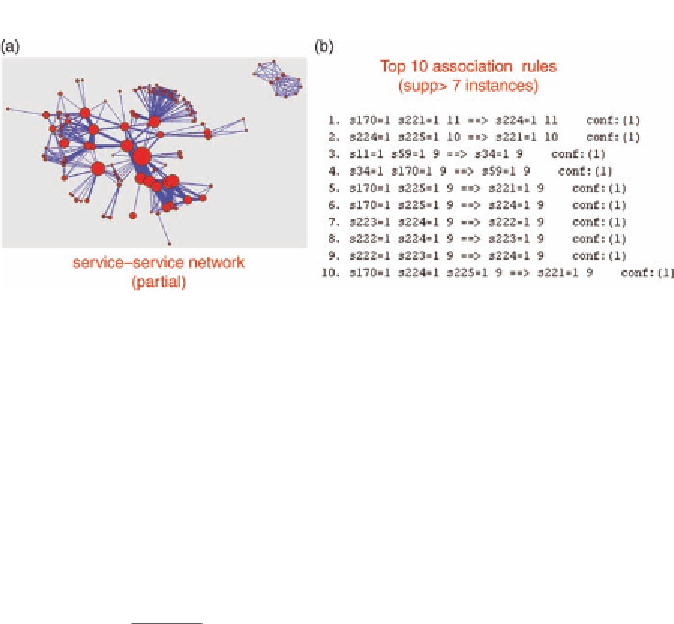Information Technology Reference
In-Depth Information
Figure 8.13
Services frequently used together and the association rules.
Step 3: Calculate Frequent Item Sets.
Since the number of transactions (
n
¼
347) is relatively small in the
context of 241 items, we do not have any large frequent set. The
maximum support for any item set
X
S
and
X
jj
2 is only 5
:
5
%
(i.e., 19 transactions).
Step 4: Calculate Association Rules.
This step is to find the set of all association rules, each in the form
of
X
)
Y
,
X
;
Y
S
,
X
\
Y
¼
1
, such that both supp
ð
X
Þ
and conf
supp
ð
X
[
Y
Þ
ð
X
)
Y
Þ¼
are significant enough.
supp
ð
X
Þ
Figure 8.13a illustrates a portion of the service-service network.
Nodes are services and an edge between them means that they are used
together in one workflow. Node size represents how many workflows in
which this service appears and edge width represents how many
workflows in which these two services appear together. It gives an
intuitive view of which services are used together frequently.
Figure 8.13b illustrates the 10 association rules with the highest
confidence value and has more than seven supporting workflows.
See the first line as an example.
1
:
s
170
¼
1
s
221
¼
111
)
s
224
¼
1 11 conf
: ð
1
Þ
This line indicates that when services
s170
and
s221
show up
together in a workflow,
s224
will show up for sure (with confidence
value 1). There are 11 supporting transactions (workflows).

